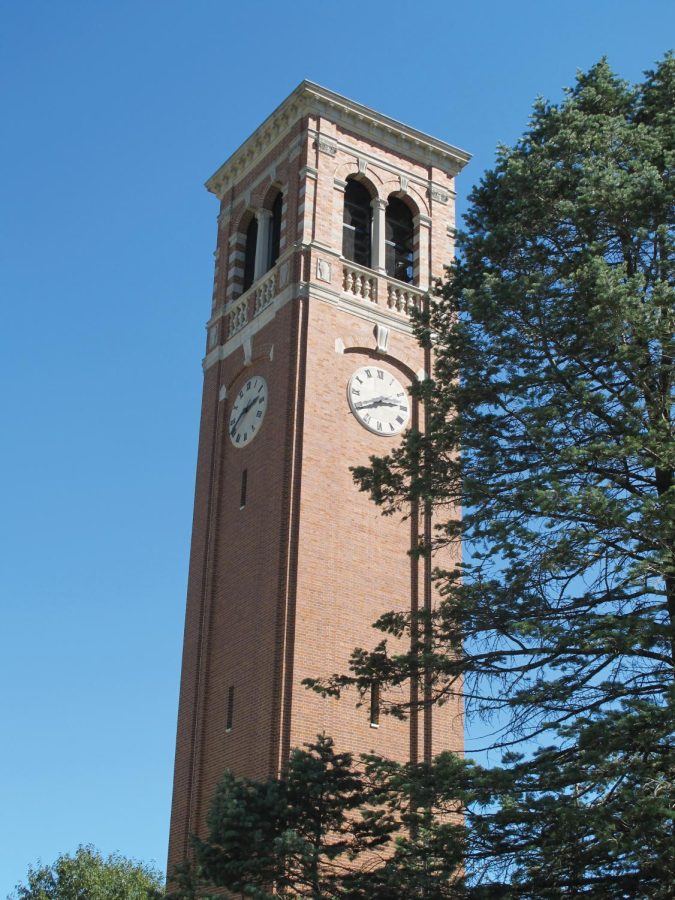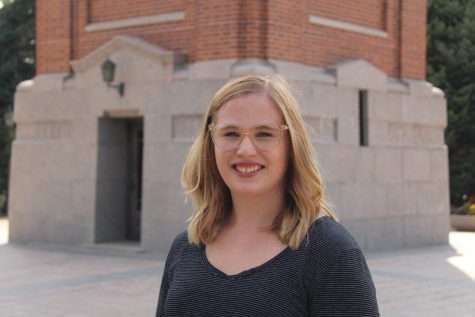UNI most expensive public university in Iowa
Without counting the financial aid package, an Iowa resident’s total cost of attendance is up to $18,213. For out-of-state students, it is $28,913.
Mar 3, 2022
Editor’s Note: Glenn Gray is a tenured university administrator with 35 years of experience in higher education including 19 years of service as a chief housing officer.
Andrew Winds’ Feb. 17 article in The Courier headlined “Dorm, dining rates at the University of Northern Iowa could rise 2%” brings to light the unfortunate fact that the net cost to attend UNI is already higher than UNI’s competitors including the University of Iowa and Iowa State University.
The UNI campus is designed and financed to serve 13,000 students. Over the past five years UNI enrollment fell from 11,907 students in fall 2017 to 9,231 students in fall 2021 – a drop of 2,676 students or 22.5% (a 53-year low).
This very unfortunate five-year decline represents an average annual drop of 535 students. Over the next five years, UNI predicts enrollment to increase from 9,231 students in fall 2022 to 10,821 students in fall 2026 – a projected increase of 1,590 students or 17.2%.
This overly optimistic five-year forecast represents an average annual increase of 318 students.
UNI also has an on-campus housing capacity of approximately 4,600 beds. About 3,876 or 84.3% of these beds are in dormitory style facilities, and about 724 or 15.7% of these beds are in apartment style facilities.
A number of rooms in the dormitory style facilities are leased to students as single rooms versus double rooms to meet student desire for more space and greater privacy. The annual percentage of enrolled students living on campus over the past 22 years (fall 2000 through fall 2021) is 32.8%.
Based on an analysis of past student enrollment trends and future student enrollment forecasting, UNI’s strategic and financial planning going forward is best based on an enrollment of up to 10,000 students, with up to 3,280 or 32.8% of enrolled students living on campus. This is approximately 3,000 fewer students than UNI is designed and financed to serve, and approximately 984 fewer students living on campus.
Affordability is critical to access, especially among first-generation, low-income and marginalized students. UNI is the only public comprehensive land-grand university in the state of Iowa.
As a land-grand university UNI is charged with providing education at low cost to all Iowans regardless of race or economic status – and yet the net cost and the low-income net cost to attend UNI is higher than it is to attend Iowa’s other two public universities (SUI and ISU).
Iowa taxpayers provide more than half (58%) of UNI’s budgeted revenue. Student tuition and fees make up most of the remainder of UNI’s budgeted revenue. UNI Housing and Dining is a self-funded enterprise that receives no state appropriation, tuition revenue or general fund dollars.
This means that students who live on campus pay all costs associated with UNI Housing and Dining. During the 2021-2022 academic year 9,231 students provided revenues needed to support a campus designed and financed to serve 13,000 students, and 3,026 or 32.8% of enrolled students provided revenues needed to support a housing and dining enterprise designed and financed to serve 4,600 students.
It is not sustainable to expect Iowa taxpayers and students attending UNI to pay more to support a campus and a housing enterprise that is larger than is needed. Instead, UNI must reduce its per student cost of attendance and its per student cost to live on campus.
To accomplish this, it is of paramount importance that UNI’s president and UNI’s vice president for finance make innovative, bold, difficult and at times what may prove to be unpopular decisions going forward. If they have the fortitude to do so, they will be better serving Iowa taxpayers who are committed to supporting UNI, students enrolled at UNI, and the Cedar Valley community within which UNI is located.










Dr. James Minick • Sep 24, 2022 at 10:34 pm
Unfortunately, the author failed to do his due diligence background checks when he wrote this article. In his eighth paragraph, he states, “UNI is the only public comprehensive land-grand university in the state of Iowa.” First of all, there is no such school as a “land-grand” university; it does not exist. There are numbers of “land grant” universities, starting with the Morrill Acts of 1862 and 1890. UNI is not now, nor ever, been a land grant college, although Iowa does have a land-grant school in Ames. Land grant schools were designed and funded to teach agriculture, science, military science, and engineering. This is not UNI’s mission. At least do your “homework” before attempting another article.
Ashley Webb • Mar 5, 2022 at 11:55 am
This article doesn’t actually tell us how much more expensive it supposedly is to attend UNI. A quick google search shows that UNI is THOUSANDS of dollars CHEAPER than ISU or Iowa. I know that this is an opinion piece (which already raises questions. Why would a piece phrased as fact be listed as an opinion piece?) , but why was such an obviously inaccurate article allowed to be published?
Tim • Mar 7, 2022 at 9:33 pm
seems to be referring to the net cost of attending the university, which is calculated by subtracting the average amount of scholarships/grants awarded by the university from the tuition/ room and board. UI and ISU are both offering larger amounts of scholarships and grants to offset the cost of attendance than UNI at least, though the math on Iowa State comes out very close to UNI from what I found.